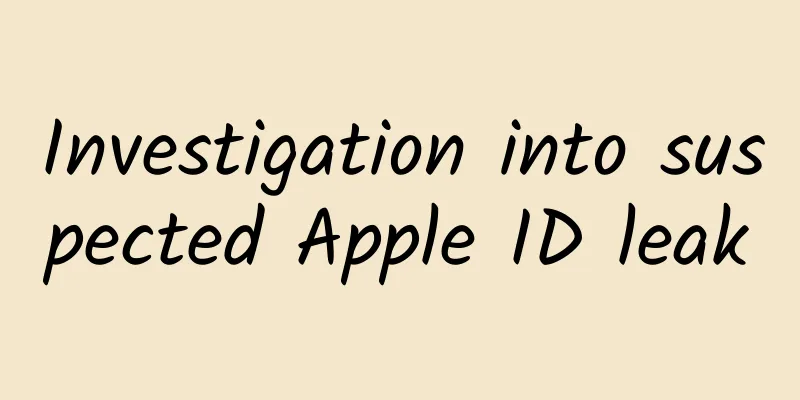Can't tell the difference between DNA, genes and chromosomes? A picture will help you figure it out

|
With the booming development of life sciences, we often come into contact with some genetic concepts in our daily lives, such as the DNA paternity test that we often hear in melodramatic TV dramas, and the gene test and chromosome test that we come into contact with during physical examinations in hospitals. Many people still cannot distinguish the concepts of DNA, genes, and chromosomes. Why do our genetic materials have three different names? Today, the blogger will use a picture to help you clarify the relationship between DNA, genes, and chromosomes. What is DNA? Strictly speaking, DNA is the genetic material of humans and almost all living things. In essence, DNA is composed of four deoxyribonucleic acids, adenine (A), guanine (G), cytosine (C) and thymine (T), according to the principle of pairing A with T and G with C, forming a double-stranded knot. Our human DNA has a total of about 3 billion pairs of nucleotides, which constitute our genome. What kind of existence is gene? Simply put, a gene is a DNA fragment that can actually exert a genetic effect. Human DNA has 3 billion base pairs, but only about 2% of the DNA can encode RNA or protein. We usually call these DNA fragments that can encode RNA or protein genes. It is estimated that there are a total of 20,000 to 25,000 coding genes in the human genome. The lengths of different genes vary greatly. Some genes have only a few hundred nucleotides, while others have millions of nucleotides. What are chromosomes then? Chromosomes are compact structures formed by DNA tightly coiled around histones. You can think of them as a form of DNA storage. Human DNA is stored in 23 pairs (46 chromosomes in total). 23 of your 23 pairs (46 chromosomes) come from your mother, and the other 23 come from your father. The blogger thought about it for a long time and thought that maybe you can understand the relationship between DNA, genes and chromosomes in this way. Suppose our DNA is a "single strand of wool" formed by four beads of A, T, G and C. Since single strands of wool are easy to break (unstable), relying on the unique attraction between the beads of A and T, C and G, we twist two single strands of wool together to form a more stable "double strand of wool" (double helix structure). Most of these double strands of wool are monotonous white, while a few have other bright colors, which can be used to weave some beautiful patterns (encoding RNA or protein). We call colored wool genes. However, because our wool is too long, it is tangled everywhere at home. In order to store these wool conveniently, we use some clips (histones) to tightly wrap these wool around the clips, and finally tangle them into 23 pairs (46) of wool sticks that look like fried dough sticks and store them in drawers (cell nuclei). References: 1. "Blueprint" 2. https://medlineplus.gov/genetics/ 3. The original materials of some pictures are provided by Servier Medical Art (http://www.servier.com). Please indicate the source when reprinting. |
<<: Perfume and poop contain the same substance? The most "smell" popular science is here
>>: Ten years! China's first tropical ocean ranch in Sanya, Hainan has achieved remarkable results
Recommend
4K becomes the standard for TVs, but there are differences in standard names
4K TV is a TV with a physical screen resolution o...
Two U.S. tech rising stars suffered setbacks, and smart hardware startups turned cold
When GoPro went public, it said that it had alrea...
Across a century, we meet the "Chinese Marie Curie"
[Popular Science Long Picture] Across a Century, ...
How should novel websites conduct SEO optimization? Novel website SEO video tutorial
Different types of websites have different SEO op...
NetEase enters the enterprise application market with Youdao Cloud Collaboration
On November 4, domestic Internet giant NetEase of...
6 traffic channels for private domain operations!
Today we discuss two issues: The first question i...
WeChat update directly targets DingTalk, who do you support?
During the epidemic, for the sake of the country ...
Does the death of Qvod P2P have anything to do with porn trafficking?
This week, Kuaibo, which was supposed to be compl...
Why do we need motion design?
With the rise of international brands such as App...
The highest realm of activity operation: product activity & activity productization!
Event planning is a standard skill for every opera...
2018Q3 Wedding Photography Industry Advertising Report, Which Information Flow Ads Are More Popular?
As my country's economy is performing well ov...
Bluetooth 5.0 and Wi-Fi, which one is better for the Internet of Things?
The Bluetooth SIG’s announcement of Bluetooth 5 i...
Can Samsung TV, which is determined not to produce OLED, still gain a foothold in the future TV market?
If the industry's most important mobile phone...
MVVM mode of mobile development architecture
The proposal and origin of the MVVM concept MVVM ...









